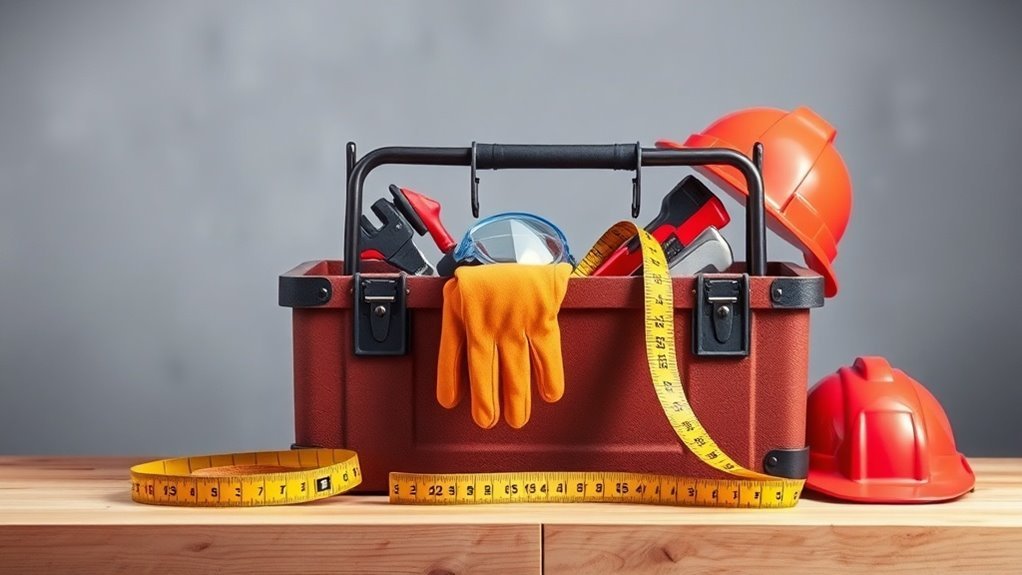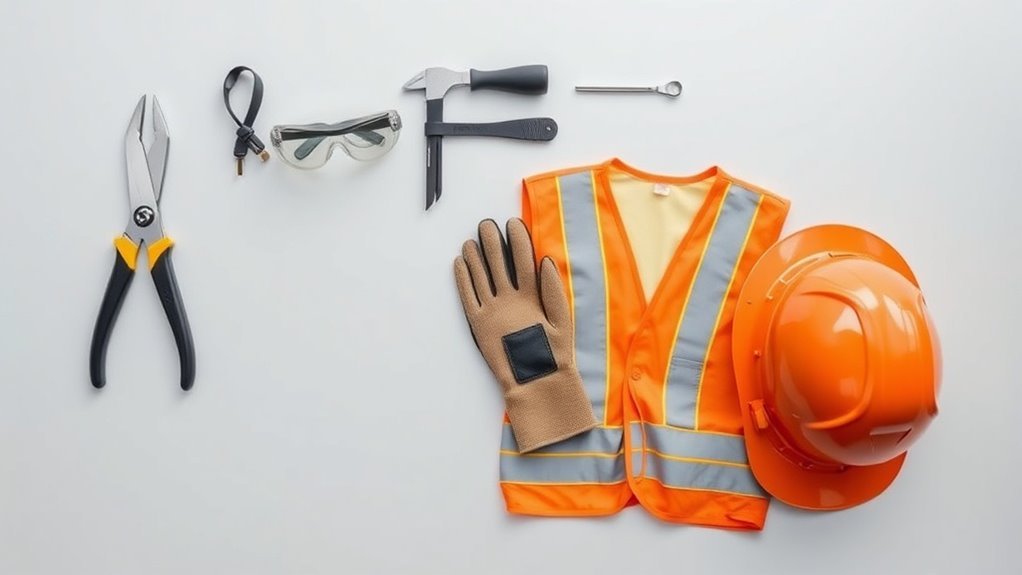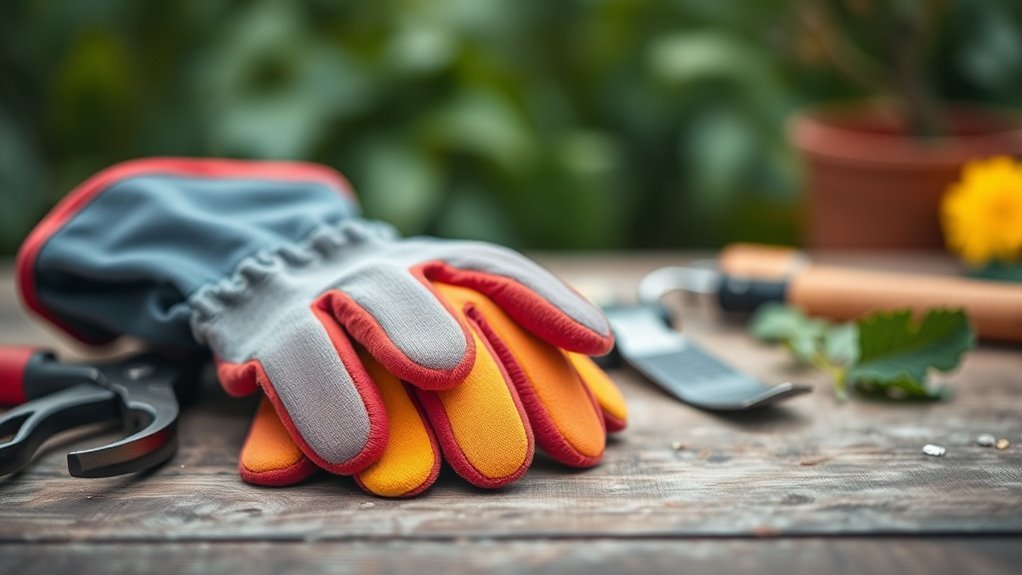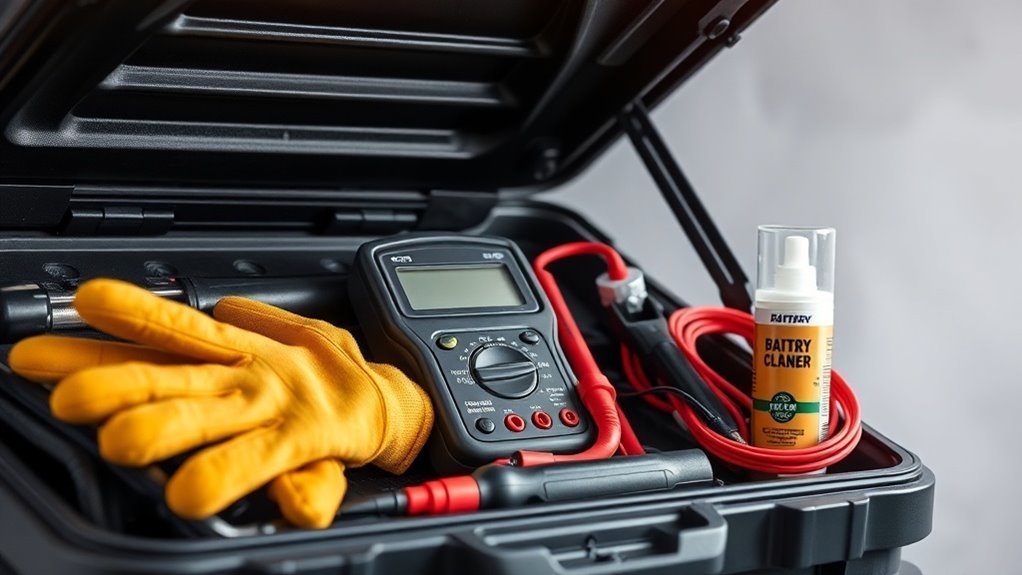Ergonomics in Safety Gear Design
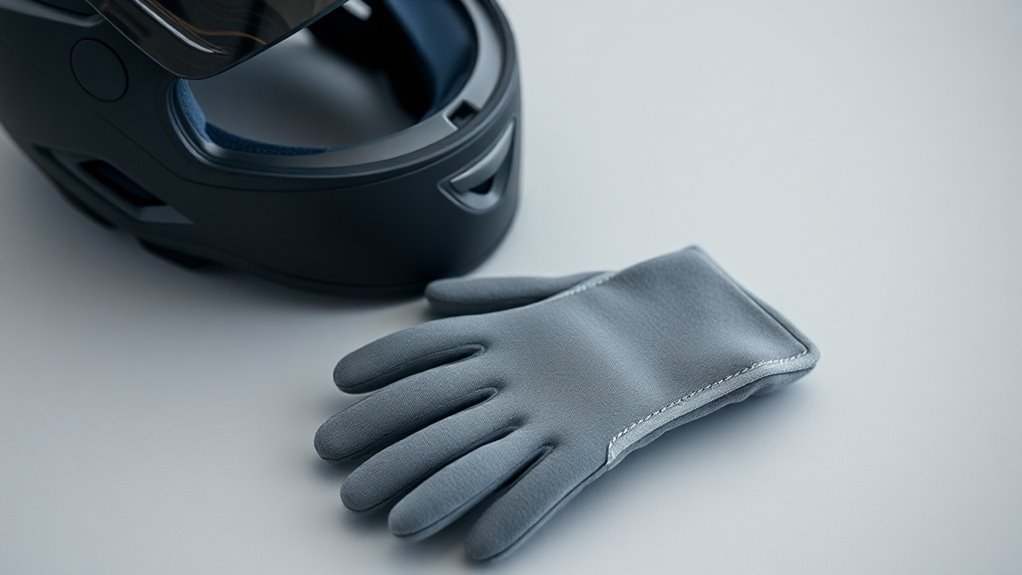
Ergonomics is essential in safety gear design because it enhances your comfort and efficiency while reducing injury risks. When safety gear fits well and features adjustable options, it minimizes strain and helps you stay focused on your tasks. Lightweight materials and thoughtful cushioning further support you throughout the workday, while ensuring you have a full range of motion. If you want to discover more about how ergonomic design can benefit you, there’s plenty more to explore.
Key Takeaways
- Ergonomic design focuses on comfort and efficiency, reducing discomfort and lowering injury risks associated with safety gear.
- Adjustable features in safety equipment allow customization, ensuring a better fit for individual user needs.
- Lightweight materials and smart designs enhance mobility while decreasing user fatigue during prolonged use.
- Proper cushioning in safety gear supports impact reduction and promotes better posture, minimizing strain during work activities.
- Future trends in ergonomics include adaptive materials and smart technology for personalized safety gear tailored to enhance comfort and performance.
The Importance of Ergonomics in Safety Gear
Ergonomics plays an essential role in the design of safety gear, ensuring that workers can perform their tasks comfortably and efficiently.
When safety gear is tailored to fit your body’s natural movements, it not only enhances your comfort but also boosts your performance. Well-designed equipment minimizes strain and reduces the risk of injury, allowing you to focus on the job at hand without distractions.
You might find that gear with adjustable features offers a personalized fit that accommodates your specific needs.
Additionally, when you’re comfortable in your safety gear, you’re more likely to wear it consistently, further contributing to your safety. Moreover, investing in ergonomically designed tools can promote better performance while minimizing the risk of injury in the workplace.
Ultimately, prioritizing ergonomics helps create a safer and more productive work environment for everyone involved.
Key Principles of Ergonomic Design
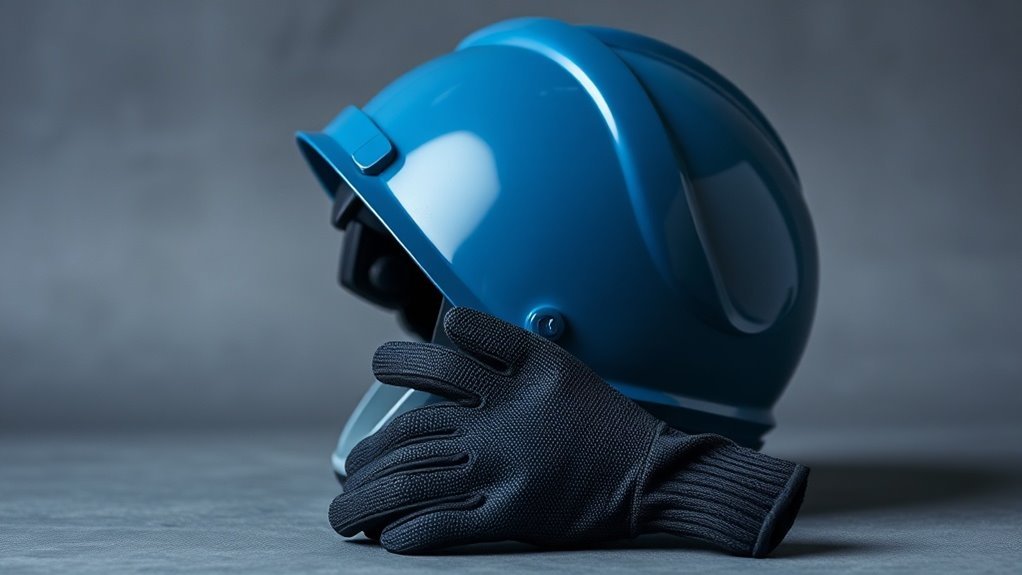
When designing safety gear, understanding the key principles of ergonomic design is essential for maximizing both comfort and efficiency.
First, prioritize fit; gear should conform to the user’s body to prevent discomfort during prolonged use.
Next, consider adjustability; adjustable features allow users to customize the fit based on their individual needs.
Aim for lightweight materials, which reduce fatigue and allow for greater mobility.
Additionally, incorporate cushioning to lessen impact and provide support where it’s most needed.
Finally, guarantee that the gear allows for a full range of motion; this prevents restrictions that could lead to injury.
Moreover, integrating user-friendly designs can enhance the overall experience and effectiveness of the safety gear.
Common Types of Ergonomic Safety Gear
There’s a wide variety of ergonomic safety gear designed to enhance comfort and protection across different sectors. Choosing the right gear not only keeps you safe but also improves your overall work experience.
Ergonomic safety gear boosts comfort and protection, enhancing both safety and your work experience.
Here are common types of ergonomic safety gear you might consider:
- Safety Helmets: Lightweight designs reduce neck strain.
- Protective Gloves: Padded grips minimize hand fatigue and improve dexterity.
- Anti-Fatigue Mats: Cushioned surfaces support your feet during long standing hours.
- Harnesses: Adjustable fit reduces pressure points while climbing or working at heights.
- Safety Glasses: Lightweight frames provide comfort without sacrificing visibility.
- Steel Toe Footwear: Properly fitted steel toe caps enhance safety against heavy objects while maintaining comfort.
Benefits of Ergonomically Designed Equipment
While you may not realize it, using ergonomically designed equipment can considerably enhance your work experience and overall safety. Such equipment reduces physical strain, allowing you to perform tasks more efficiently and with less discomfort.
You’ll find that well-designed gear fits your body better, promoting better posture and reducing the risk of injuries. Additionally, these products often incorporate intuitive features, making them easier and more comfortable to use throughout your workday. This means you can focus on your tasks rather than adjusting your gear.
Ultimately, ergonomically designed equipment doesn’t just protect you physically; it can also boost your productivity and morale, creating a safer and more enjoyable work environment. Thoughtful design can significantly reduce user fatigue during prolonged use, making it an essential consideration in your gear selection. Investing in ergonomic solutions is investing in your well-being.
Case Studies: Successful Ergonomic Implementations
When it comes to ergonomic safety gear, real-world examples can highlight the impact of enhanced comfort features and innovative design solutions.
You’ll see how these implementations not only improve user experience but also boost safety and productivity.
Let’s explore some standout case studies that showcase these advancements in action.
Enhanced Comfort Features
Ergonomic design in safety gear goes beyond mere compliance; it’s about prioritizing user comfort to enhance performance and reduce fatigue. When safety gear is comfortable, you can focus better on your task without distractions or discomfort.
Successful implementations have introduced features that cater to wearers’ needs, improving overall satisfaction.
- Padded straps that reduce shoulder fatigue
- Breathable fabrics that enhance airflow
- Adjustable components for a personalized fit
- Lightweight materials to minimize strain
- Impact-resistant cushioning for better shock absorption
These enhancements not only make the gear easier to wear for extended periods but also decrease the risk of injuries. When safety gear feels good, you’re likely to perform at your best while remaining protected.
Innovative Design Solutions
As safety gear continues to evolve, companies are discovering innovative design solutions that not only enhance ergonomics but also improve user experience considerably. For instance, some brands have integrated smart technology to monitor users’ posture and fatigue levels. Others focus on modular designs, allowing for customization based on specific tasks. These advancements considerably reduce injury risks and enhance comfort.
Here’s a quick look at some successful implementations:
| Company | Solution | Benefit |
|---|---|---|
| SafetyFirst Gear | Adjustable harnesses | Custom fit for all users |
| ErgoProtect | Soft-shell helmets | Lightweight, improved mobility |
| ComfortBoots | Anti-slip soles | Better grip and stability |
| FlexArmor | Flexible body armor | Greater freedom of movement |
Future Trends in Ergonomics for Safety Gear
Although many safety gear designs have evolved over the years, the future holds exciting advancements in ergonomics that promise to enhance both comfort and functionality.
As you look ahead, you can expect to see innovations that make safety gear not just protective, but also user-friendly. Here’s what to keep an eye out for:
- Adaptive materials that mold to your body shape for improved fit.
- Smart technology integration providing real-time data on environmental hazards.
- Sustainable materials reducing environmental impact while maintaining durability.
- Personalized cushioning systems tailored to individual user preferences.
- Flexible designs allowing for better movement without compromising safety.
These trends collectively aim to create gear that feels as good as it protects. Furthermore, as certifications like ANSI and OSHA become more critical, manufacturers will likely focus on integrating ergonomic aspects that meet these safety standards.
Questions
How Does Body Shape Influence Safety Gear Ergonomics?
Body shape greatly influences safety gear ergonomics because it affects how comfortably gear fits, how well it allows movement, and how effectively it protects you. A proper fit enhances safety and comfort during use.
What Materials Are Best for Ergonomic Safety Gear Design?
For ergonomic safety gear, lightweight fabrics like breathable mesh and flexible polymers are your best friends. They not only offer comfort but also allow ease of movement, ensuring you feel good while staying protected in any situation.
Can Ergonomics Reduce Workplace Injuries Effectively?
Yes, ergonomics can effectively reduce workplace injuries. By designing tools and environments that fit your body’s natural movements, it minimizes strain, enhances comfort, and boosts productivity, leading to safer and more efficient workspaces.
How Do Temperature and Humidity Affect Ergonomic Safety Gear?
Temperature and humidity can considerably affect ergonomic safety gear. If it’s too hot or humid, gear may become uncomfortable or restrictive, reducing your mobility and focus, ultimately increasing the risk of accidents or injuries.
Are There Certifications for Ergonomic Safety Gear Products?
Yes, there are certifications for ergonomic safety gear products. You should look for labels from organizations like ANSI or ISO, as these guarantee the gear meets specific ergonomic standards and enhances comfort and safety for users.
Conclusion
Incorporating ergonomics into safety gear isn’t just about comfort; it’s about enhancing your performance and well-being, much like how Athena’s armor was crafted for both protection and agility. As you prioritize ergonomic design, you’re not only safeguarding yourself against injury but also ensuring that you can work efficiently and effectively. As the future unfolds, let’s embrace these innovative shifts, allowing the harmony between safety and design to guide our choices in gear—because every detail matters in the quest for safety.


